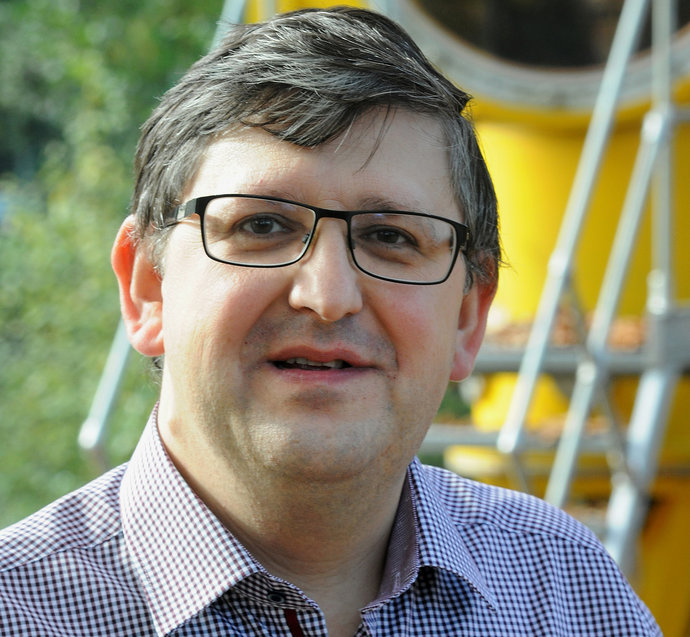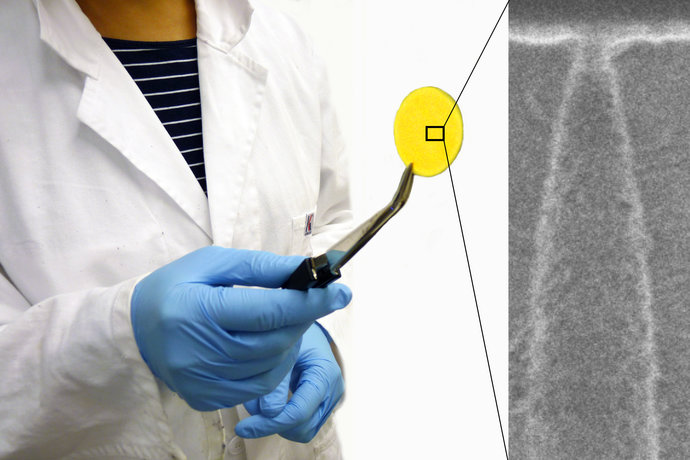
The new program of the lecture series “Wissenschaft für Alle” of GSI and FAIR for the first term of 2022 has made it its motto to visualize the invisible. It is about the small and big aspects in microscopy and space as well as about possibilities to make information perceptible and tangible. The series will continue in an online format until further notice; interested parties can connect to the video conference events via a dial-up link using an internet-enabled device such as a laptop, cell…

Professor Gabriel Martínez-Pinedo will receive the 2022 Gottfried Wilhelm Leibniz Prize from the Deutsche Forschungsgemeinschaft (DFG, German Research Foundation). This is most important and highest endowed German research prize. Martínez-Pinedo is award for his outstanding work at the interface between astrophysics, nuclear physics and neutrino physics. He researches and teaches at the Institute for Nuclear Physics at the TU Darmstadt and at the GSI Helmholtzzentrum für Schwerionenforschung in…

Two young researchers have been awarded this year's Christoph Schmelzer Prize: Dr. Theresa Suckert from the Technical University of Dresden and German Cancer Consortium (DKTK), partner site Dresden, and Dr. Felix Horst from the University of Giessen. With this award, the Association for the Promotion of Tumor Therapy with Heavy Ions e.V. annually honors outstanding master's respectively doctoral theses in the field of tumor therapy with ion beams.

Which are the best applications for tumor therapy with charged particles to realize its great potential for the future? In which cases can it be used most effectively? These aspects belong to the most exciting questions in radiation biology and medical physics. A group of top-class experts now evaluated and summarized the state-of-the-art of heavy ion radiotherapy and presented a review article in the world-renowned online journal "Nature Reviews". Main author of the text with the title „Physics…

How are chemical elements produced in our Universe? Where do heavy elements like gold and uranium come from? Using computer simulations, a research team from the GSI Helmholtzzentrum für Schwerionenforschung in Darmstadt, together with colleagues from Belgium and Japan, shows that the synthesis of heavy elements is typical for certain black holes with orbiting matter accumulations, so-called accretion disks. The predicted abundance of the formed elements provides insight into which heavy…

All known atomic nuclei and therefore almost all visible matter consist of protons and neutrons, yet many of the properties of these omnipresent natural building blocks remain unknown. As an uncharged particle, the neutron in particular resists many types of measurement and 90 years after its discovery there are still many unanswered questions regarding its size and lifetime, among other things. The neutron consists of three quarks which whirl around inside it, held together by gluons.

With the WASA detector, a very special instrument is currently being set up at GSI/FAIR. Together with the fragment separator FRS, it will be used to produce and study so-called hypernuclei during the upcoming experiment period of FAIR Phase 0 in 2022. For this purpose, the assembly, which weighs several tons, is being transferred to the facility in a complex installation procedure. The scientific relevance of the planned experiments with hypernuclei is also shown by a recent review article in…

Easy and fast detection of viruses are crucial in a pandemic. Based on single-nanopore membranes of GSI, an international interdisciplinary team of researchers developed a test method that detects SARS-CoV-2 in saliva, without sample pretreatment, with the same sensitivity as a qPCR test, and in only 2 hours. On top, the sensor can distinguish infectious from non-infectious corona viruses — a crucial innovation.

What happens in a supernova explosion? Why do we accelerate particles? What does the work of researchers involve? High-school students can get to the bottom of these and many other questions in the interactive online events of "Meet a scientist". From October 25 to November 5, 2021, school classes will have the opportunity to talk directly with scientists from the GSI Helmholtz Center for Heavy Ion Research and the Facility for Antiproton and Ion Research (FAIR) in Darmstadt.












